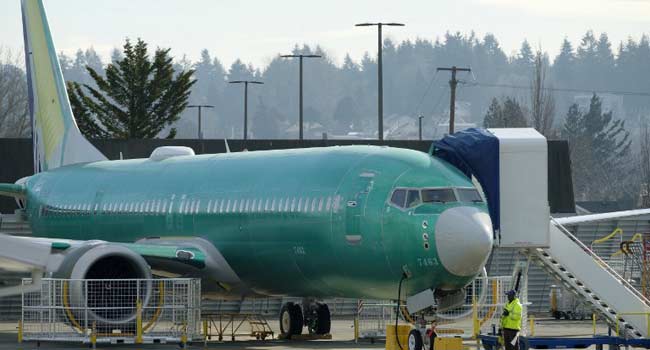
From its first flight to ceasing production and ouster of the CEO on Monday, below are the key dates in the life of the Boeing 737 MAX and the twin crashes that sparked a crisis.
Two deadly disasters
The Boeing 737 MAX, a narrow body aircraft that can transport up to 230 passengers depending on the model (7, 8, 9 and 10), was certified to fly on March 8, 2017 by the US Federal Aviation Agency (FAA). It was put into service in May of that year.
On October 29, 2018, a 737 MAX 8 from budget airline Lion Air crashed off the coast of Indonesia, killing 189 passengers and crew members.
Less than five months later, on March 10, 2019, an Ethiopian Airlines 737 MAX 8, flying to Nairobi, crashed near Addis Ababa, claiming 157 lives.
Grounded worldwide
China is the first country to ban the aircraft, on March 11. Regulators worldwide follow suit, but the American officials initially said there was “no basis” for grounding the 737 MAX.
US President Donald Trump intervened on March 13 announcing the planes would be grounded “effective immediately.” The FAA issued the official decree shortly after his statement.
– Crash investigations –
Indonesian authorities published its preliminary report on the Lion Air crash on November 28, 2018 — months before the second disaster — citing nine factors that contributed to the accident, including inadequate pilot training, and flawed design and certification of the MCAS flight control software.
The MCAS, which lowers the aircraft’s nose if it detects a stall or loss of airspeed, was developed specifically for the 737 MAX, which has heavier engines than its predecessor in the 737 family. But it relied on a single sensor which made it vulnerable to failure.
On March 17, 2019, Ethiopian Transportation Minister Dagmawit Moges revealed “clear similarities” between the Ethiopian Airlines flight 302 and Lion Air flight 610.
The MCAS anti-stall system was activated automatically in both disasters after receiving erroneous information indicating that the aircraft was stalling. The pilots were not aware of the existence of this software since it was not in the flight manuals.
Boeing comes under scrutiny of American and international regulators, as well as the US Congress, which is investigating complaints from American pilots about the MCAS, and the close ties between the FAA and the company.
Production stopped
After the aircraft is grounded, Boeing is forced to suspend deliveries on March 14, 2019, but the company initially maintains MAX production at 52 planes a month.
Output is later cut to 42 a month for the popular plane, which represented nearly 40 percent of Boeing sales in 2018.
But on December 17, after the FAA made it clear the MAX would not return to the skies anytime soon, Boeing announces it will halt production of its flagship aircraft in January 2020, for an indefinite period.
Leadership shakeup
The company had continued to express confidence that the MAX would return to the skies by the end of 2019, as it addressed software modifications and improved pilot training, but was criticized for putting pressure on regulators to rush the plane back into service.
Airlines were forced to push back the expected date for returning their Boeing 737 MAX fleet to service.
A week after announcing the production halt, Boeing on December 23 ousted Dennis Muilenburg, who has been at the helm of Boeing since July 2015. The company already stripped him of his title of chairman of the board in October.
Boeing named board Chairman David Calhoun as chief executive and president, saying the company needed to “restore confidence” and “repair relationships with regulators, customers and all other stakeholders.”




